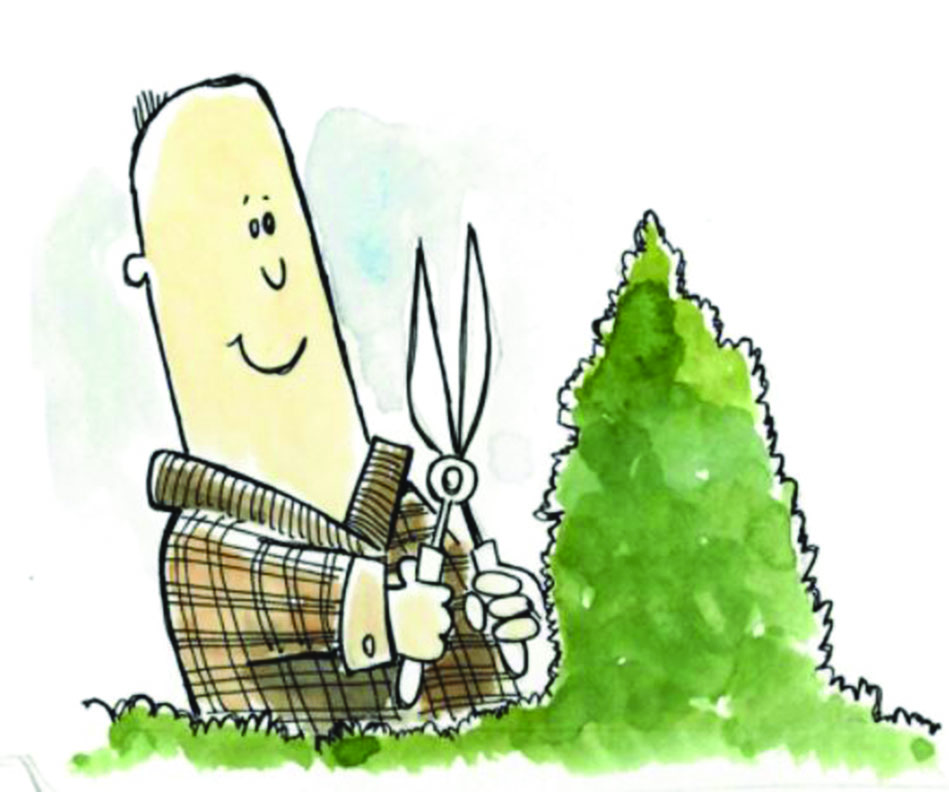Pruning questions come as soon as weather changes
Published 12:00 am Friday, February 28, 2020

- Illustration by Mark Brincefield With changing weather, questions about pruning are more frequent.
When I’m out and about, pruning advice seems to be the most recurring inquiry from many homeowners.
It’s the change of seasons or weather conditions that sparks interest in pruning, whether it’s a light trimming or a complete bloodletting. Landscape plants and trees all need some type of pruning as they grow and mature.
The best time to prune trees and shrubs depends upon the type and age, time of year and the overall objective for plant growth. That is an over-simplified answer to a very complex situation since all landscaping materials have differences in growth habit, bloom cycles and susceptibility to cold damage.
Below are a few of the most commonly planted plant materials with information about pruning specific plant materials.
Boxwoods — If you want to lightly prune them, almost any time during the year is fine. Severe pruning is normally recommended in mid-March.
Azaleas — Azaleas, rhododendron and other flowering plants should be pruned just after bloom. Prune standard azaleas during late spring and early summer. Don’t prune after July 4, because most are setting buds for next year. Encore azaleas should be pruned lightly after bloom.
Camellias — Lightly prune camellia sasanqua and japonica after bloom.
Fruit trees — Fruit trees are best pruned in the late spring, the later the better. Pruning stimulates growth hormones and unseasonably warm weather stimulates growth, increasing the possibility of late frost damage in the spring. So, if the trees normally bloom in April, pruning in March is advisable. The older the tree, the earlier you can prune.
Grapes — Grapes need to be pruned every year to ensure proper growth and development. The best time is generally February and March. Lightly pruning grapes in June will normally cause no winter damage, however, late winter pruning is best for both muscadine and bunch type grapes.
Crape myrtles — Many people prune crape myrtles year-round with no damage. However, to avoid winter injury, research has shown pruning in mid-March or April is best to avoid winter damage which can delay bloom. Do I have to prune my crape myrtles? No, crape myrtles will bloom without annual pruning.
Ornamental trees — Most shade trees can be judiciously pruned in early spring, however, birch and maple bleed much less if you prune them in September when leaves are still present. Research has shown that pruning paint is of no benefit and in some cases is a detriment, allowing fungi to develop between the paint and the newly pruned wood.
In general, most all plants can be lightly pruned year-round. Tipping back radical shoots or sporadic growth will not severely damage plants.
Darrell Blackwelder deblackw@ncsu.edu is the retired horticulture agent and director with the North Carolina Cooperative Extension Service in Rowan County.


